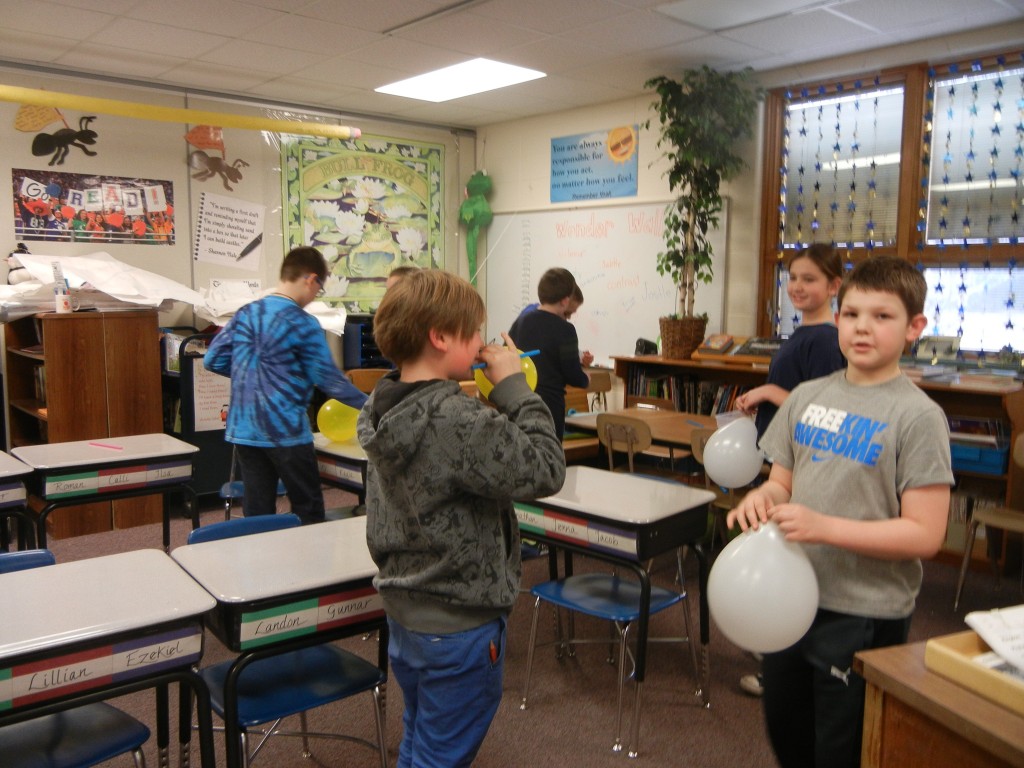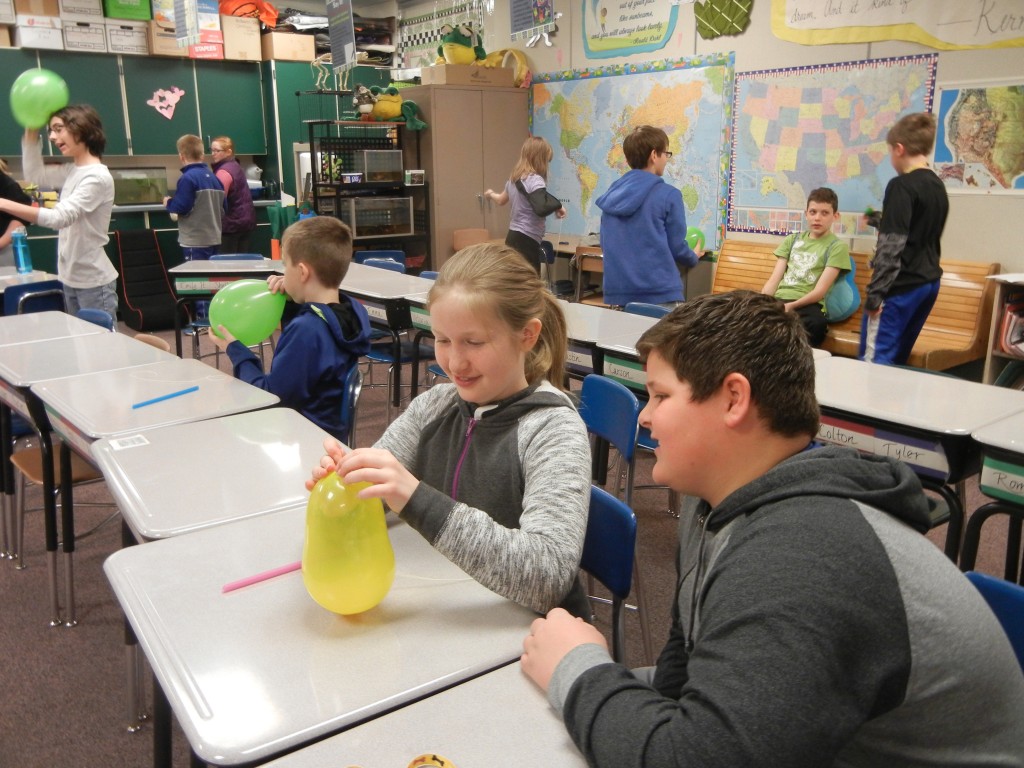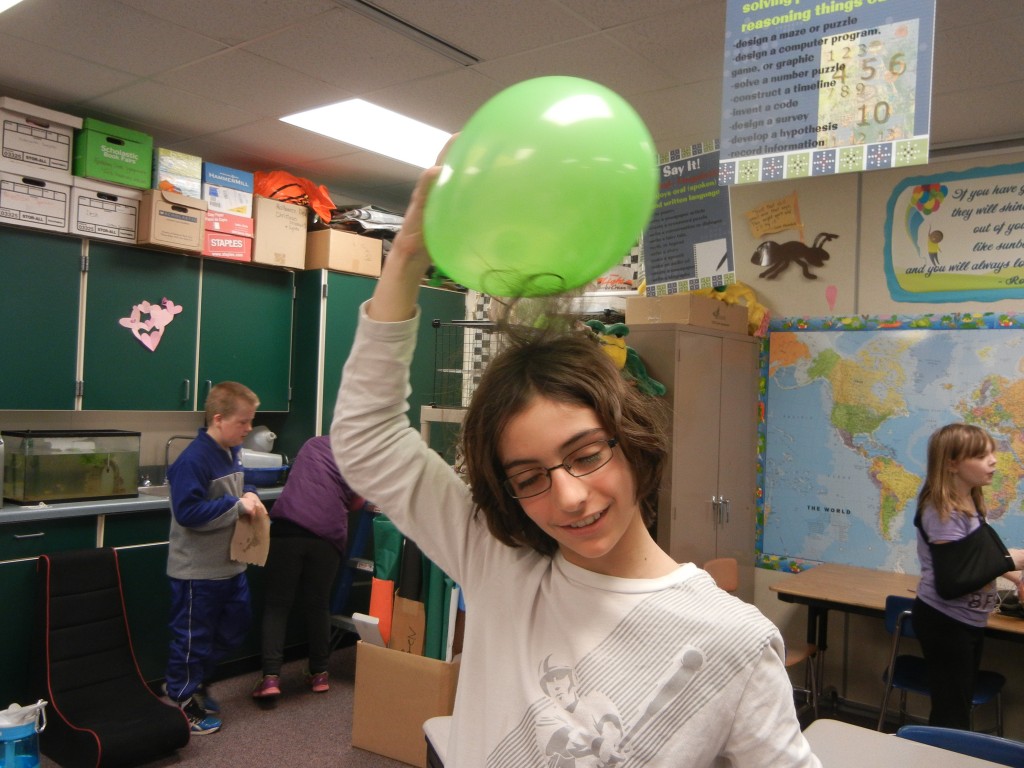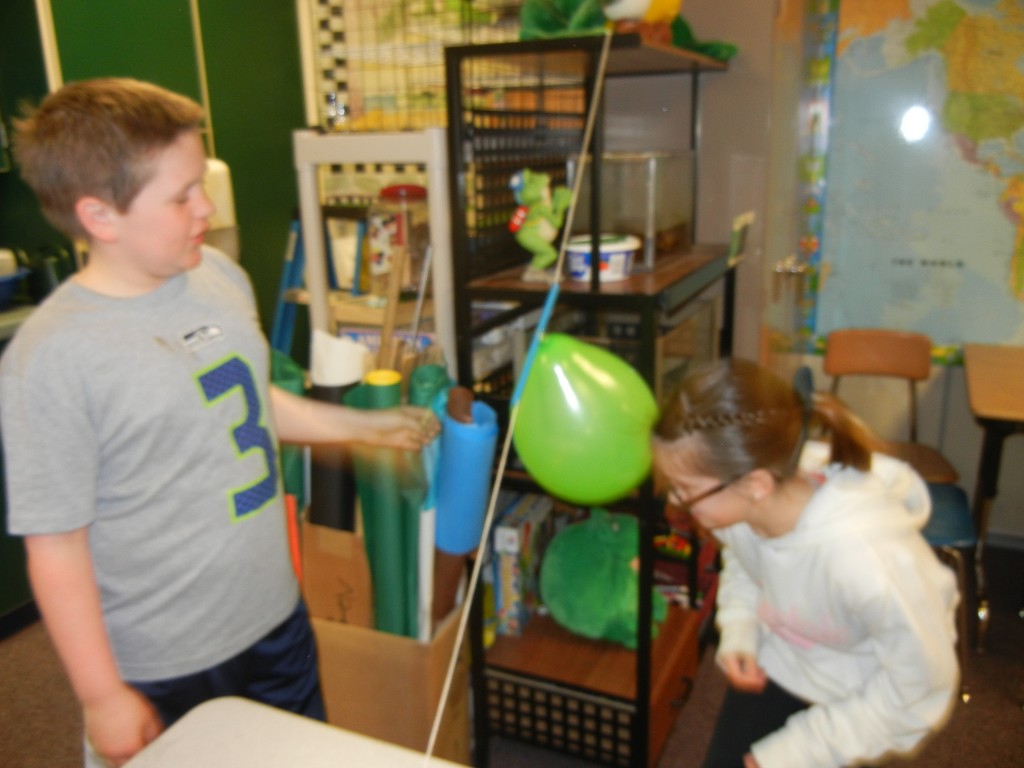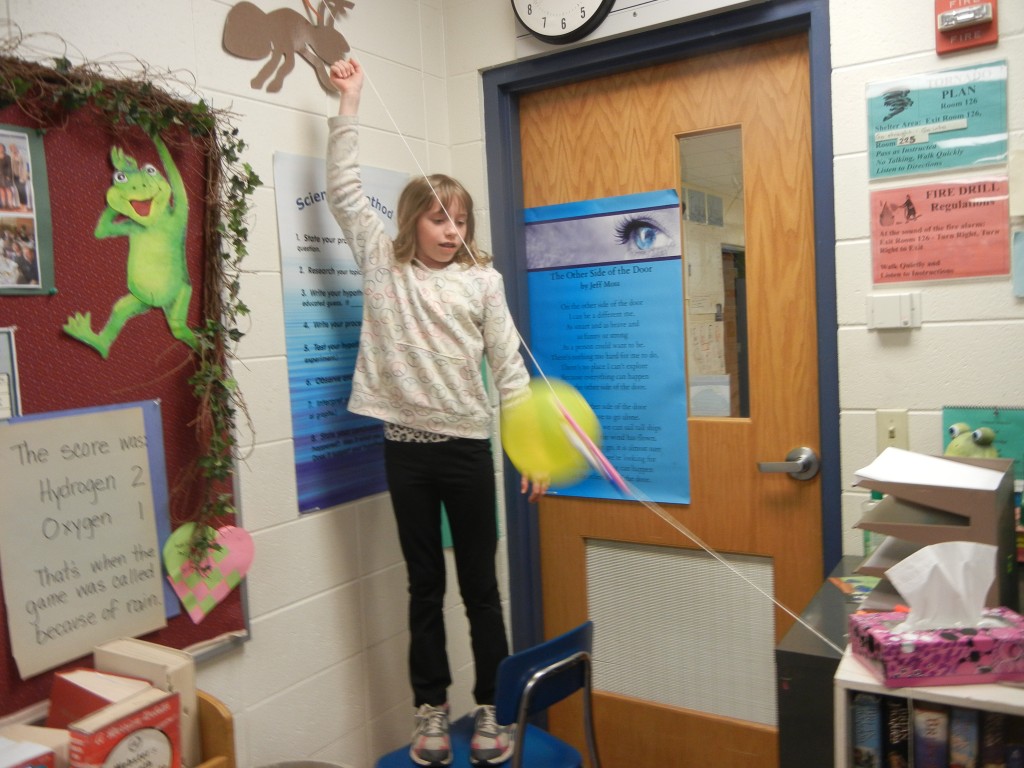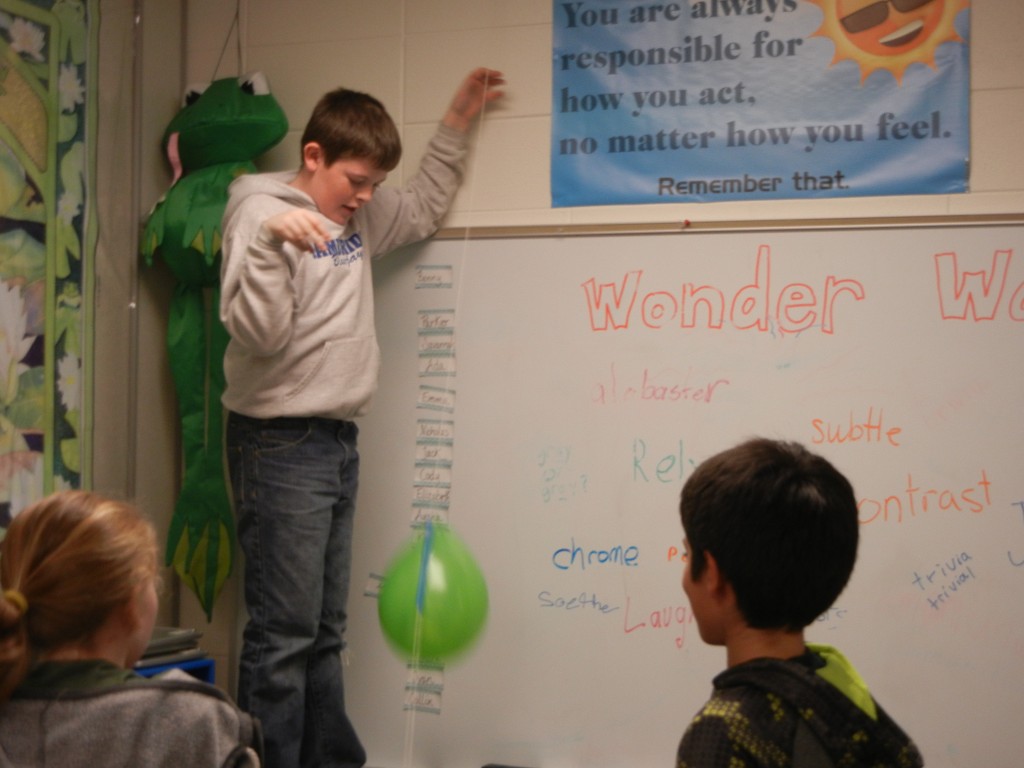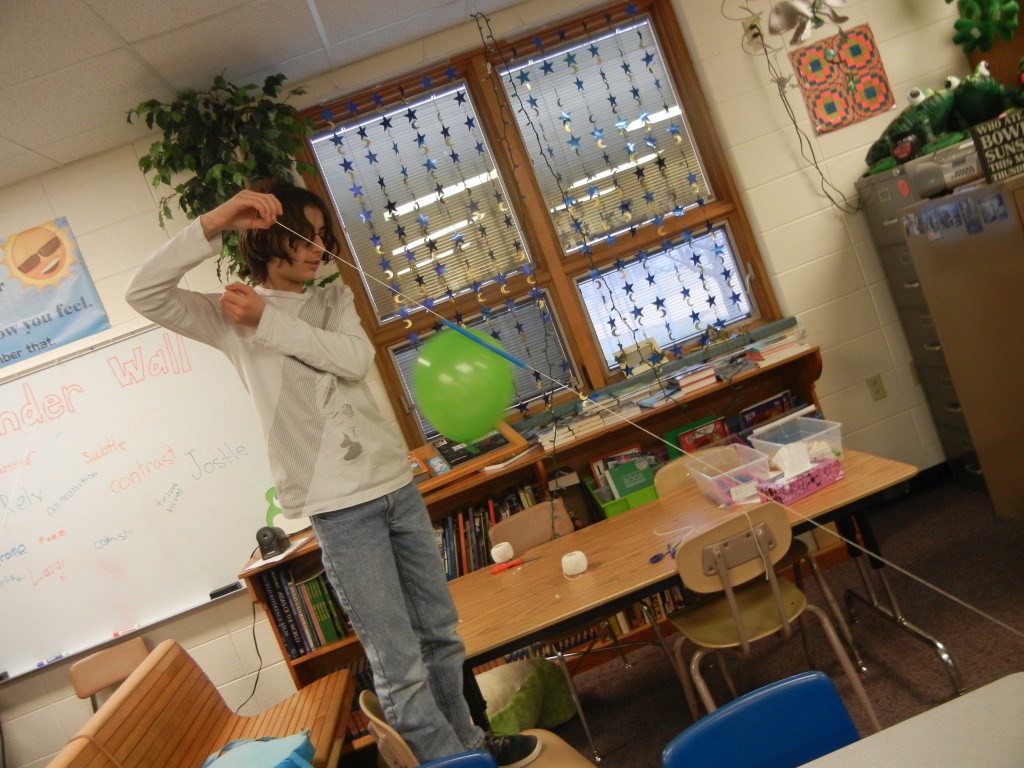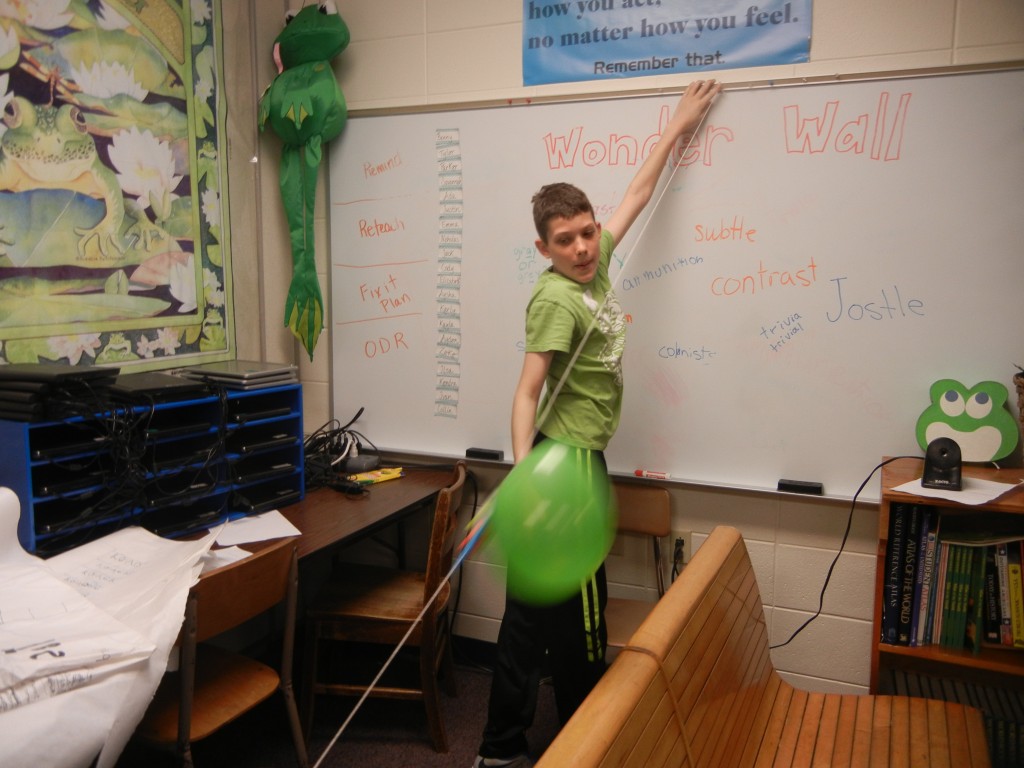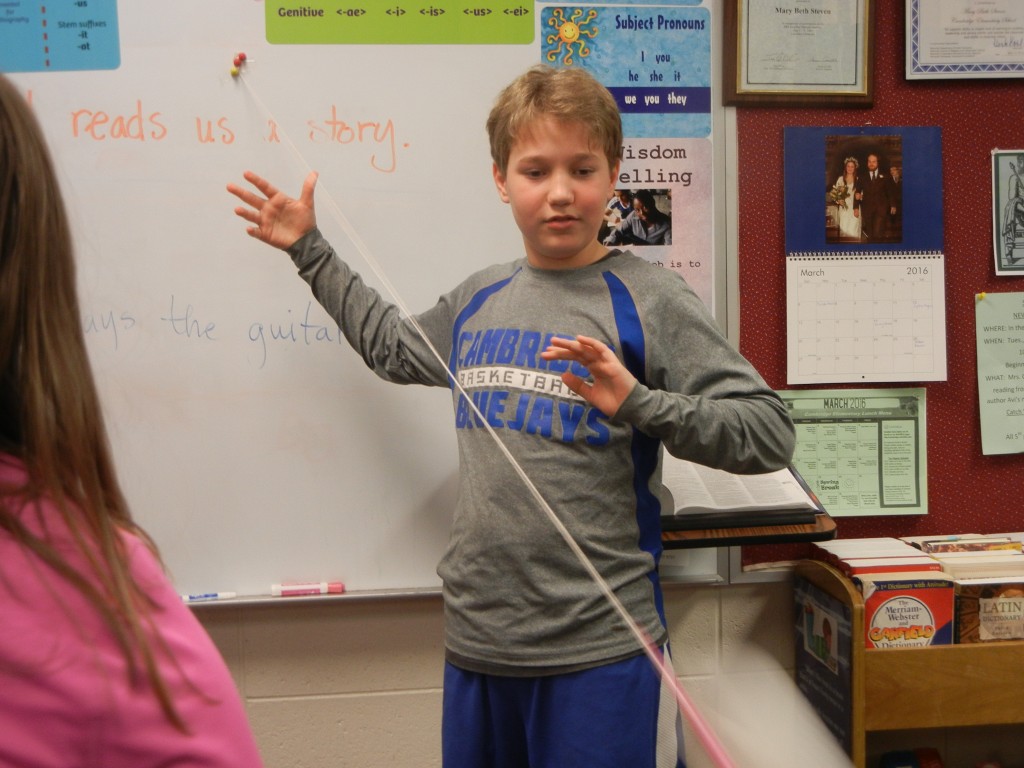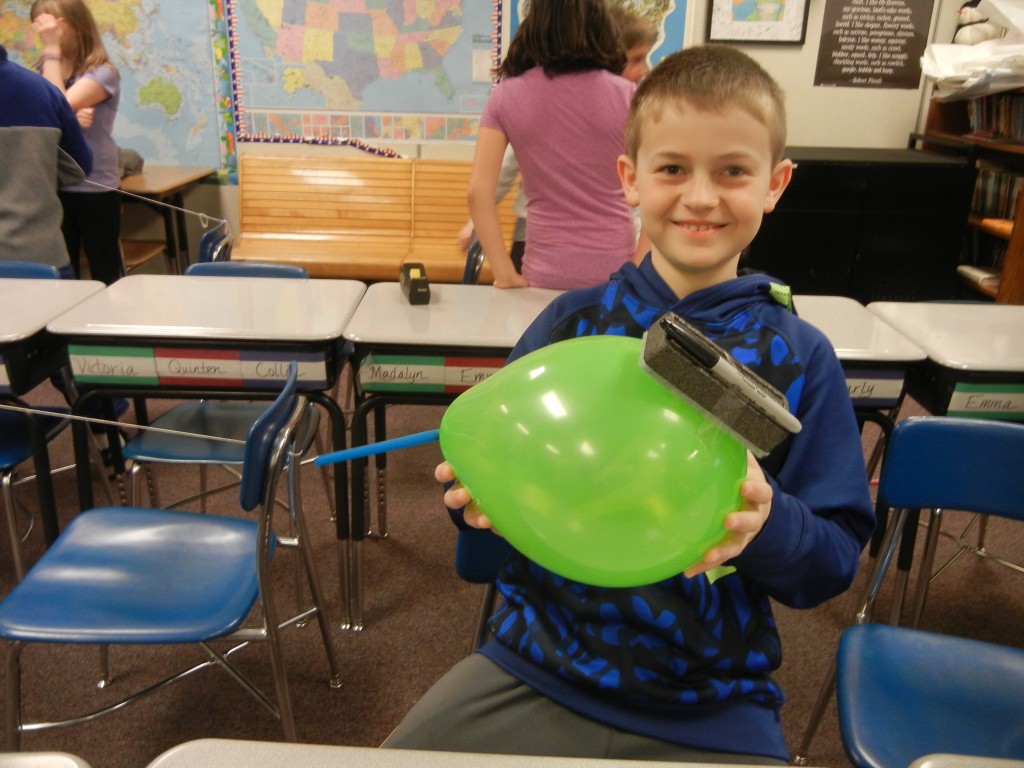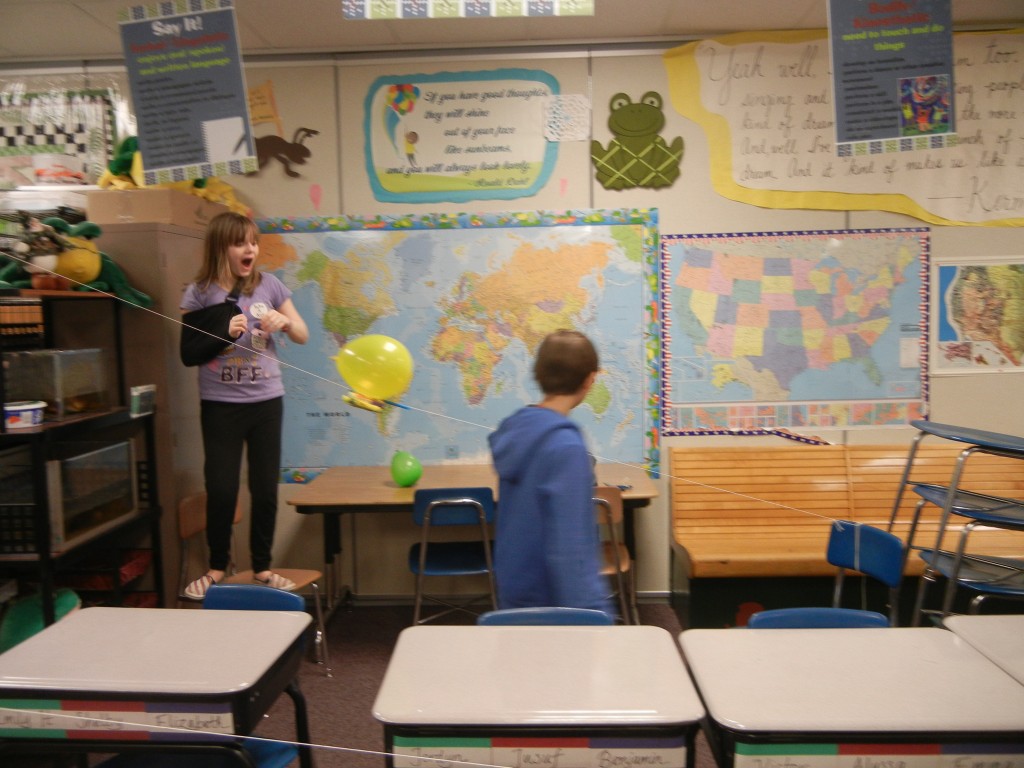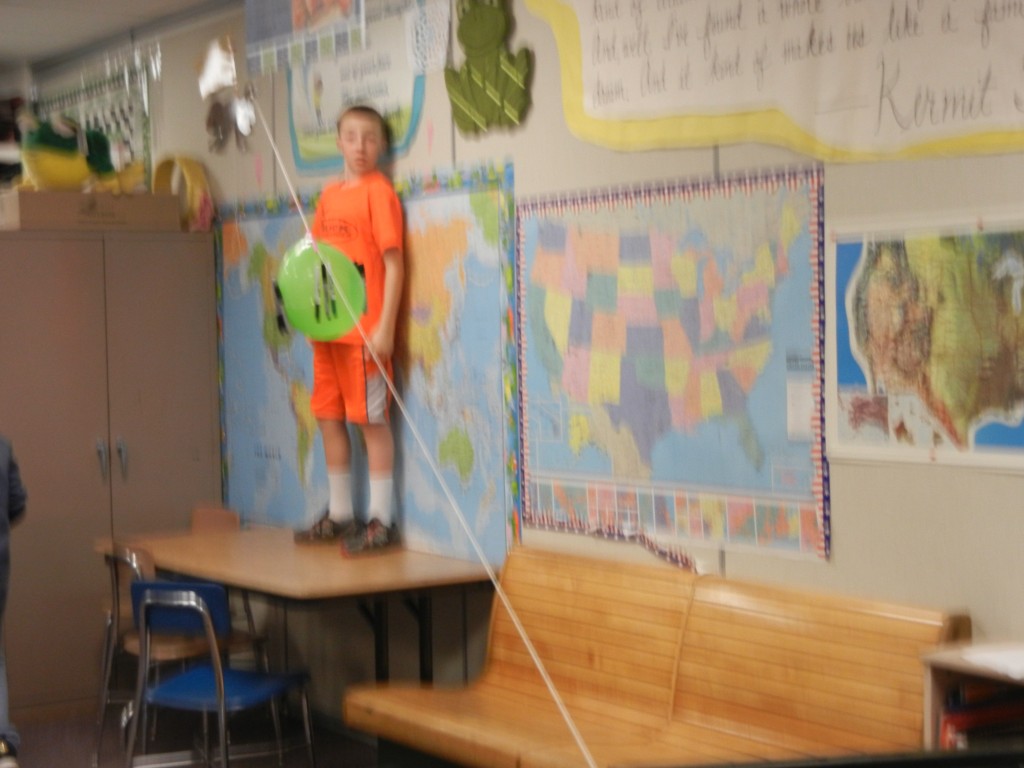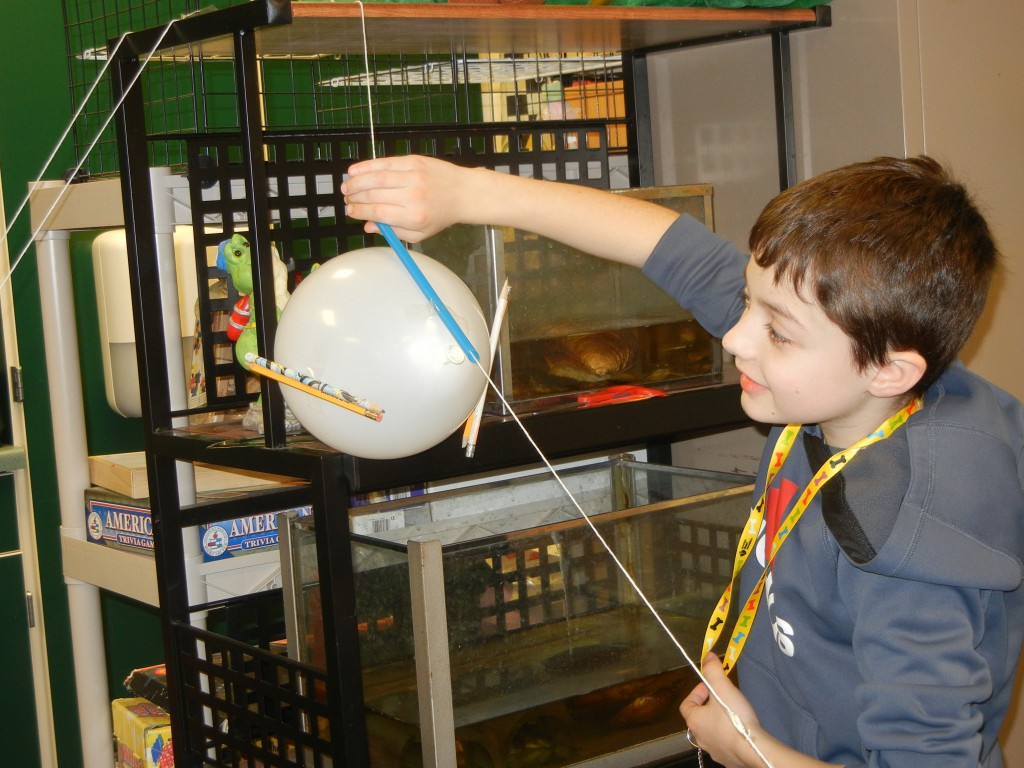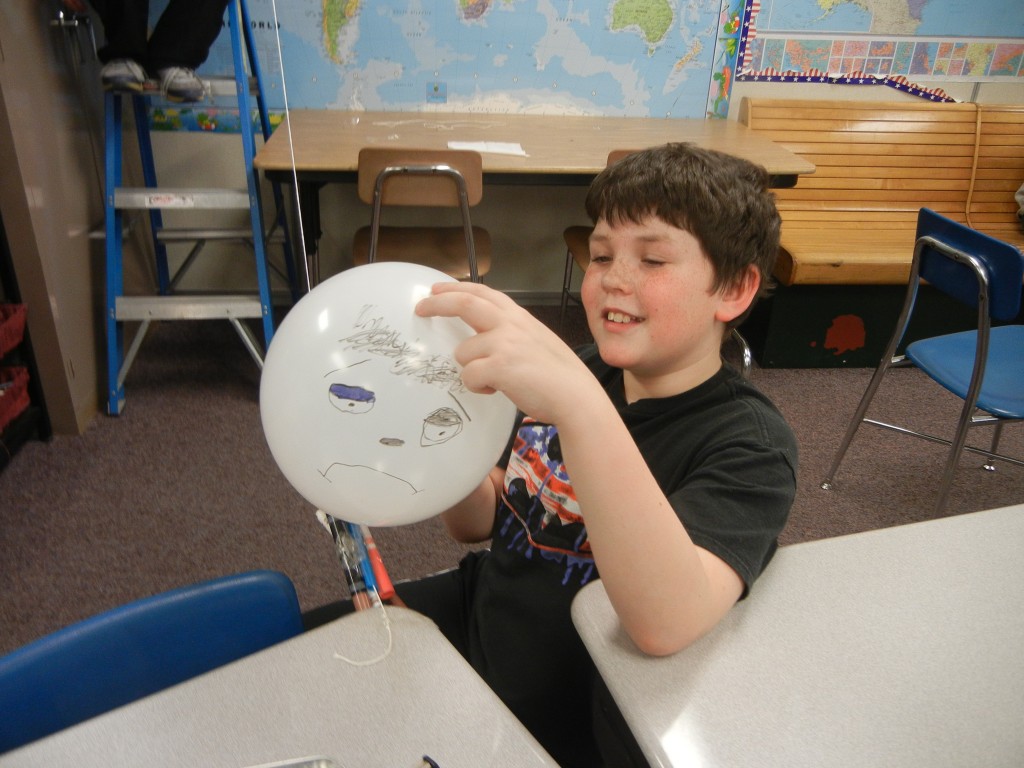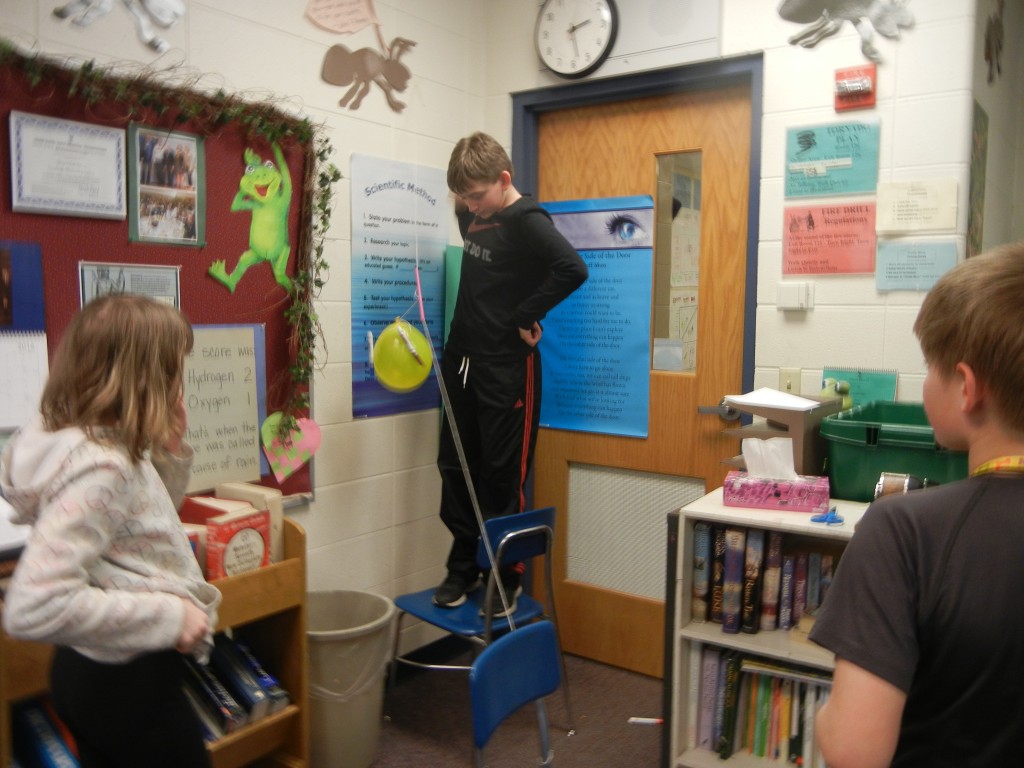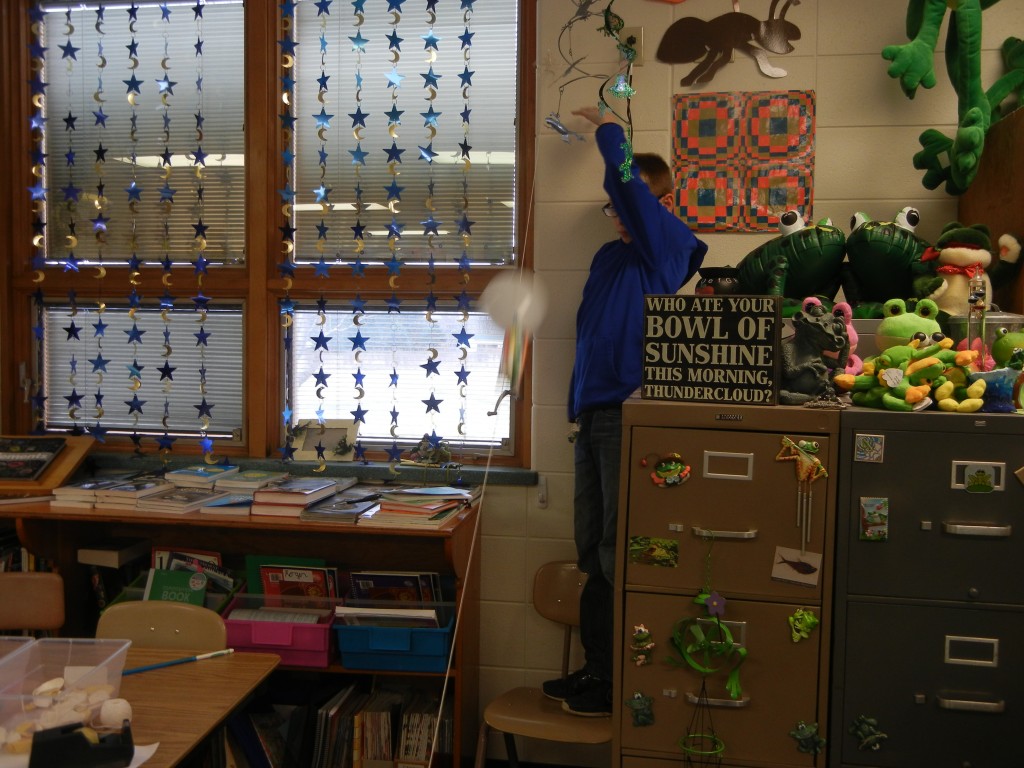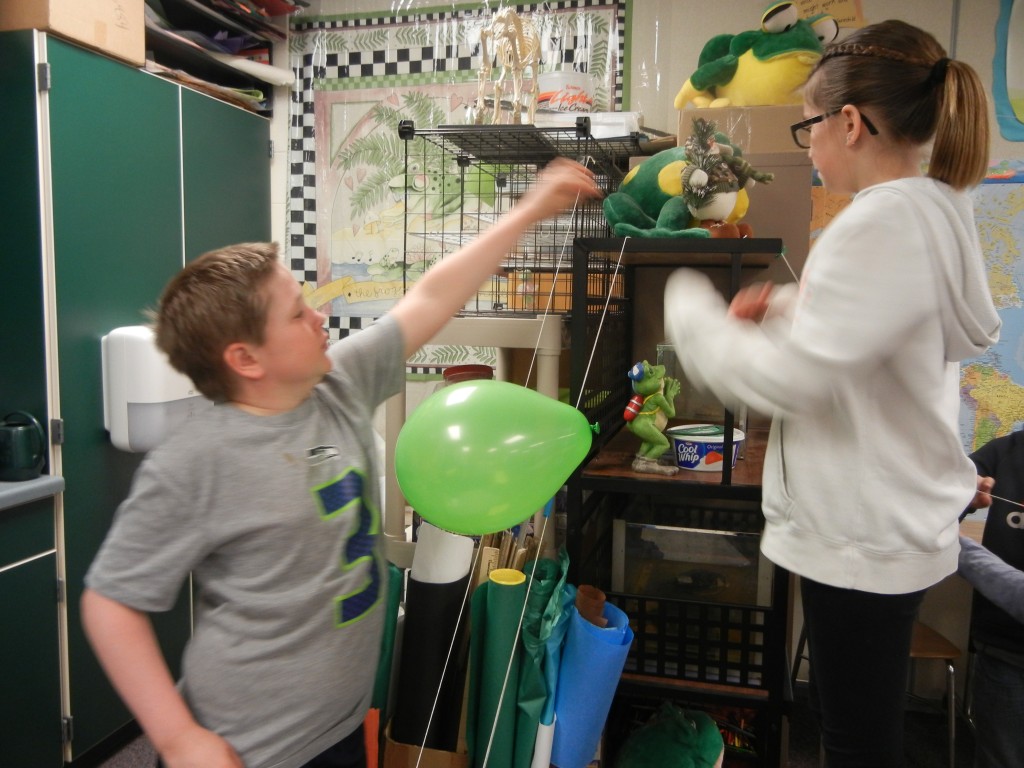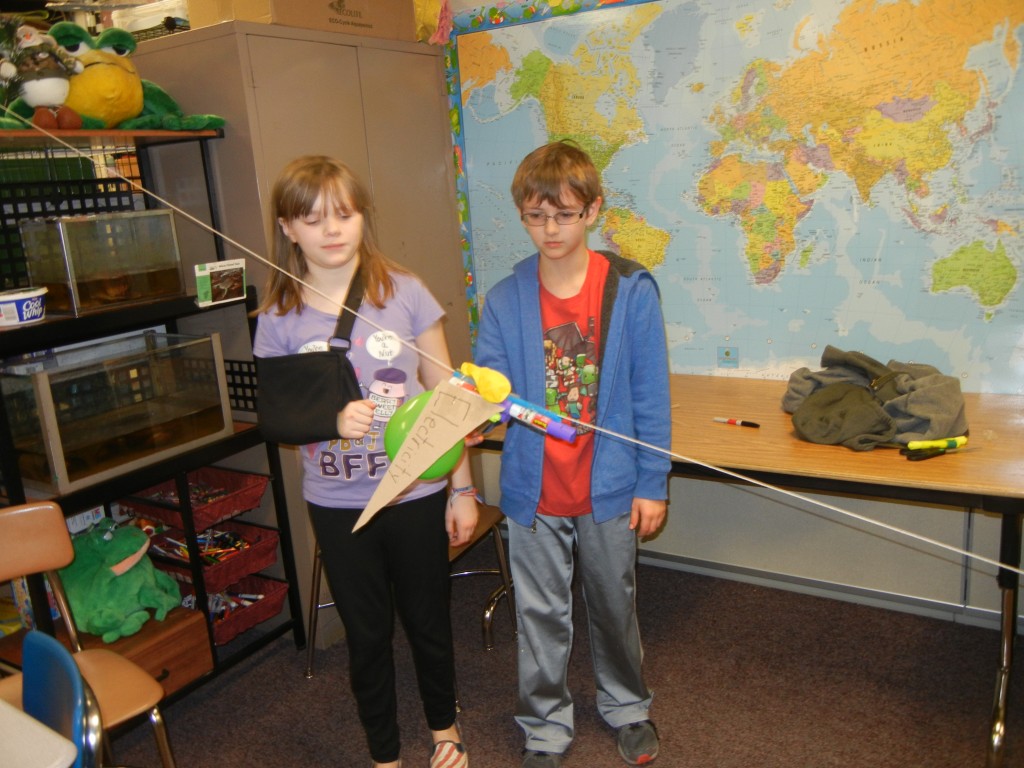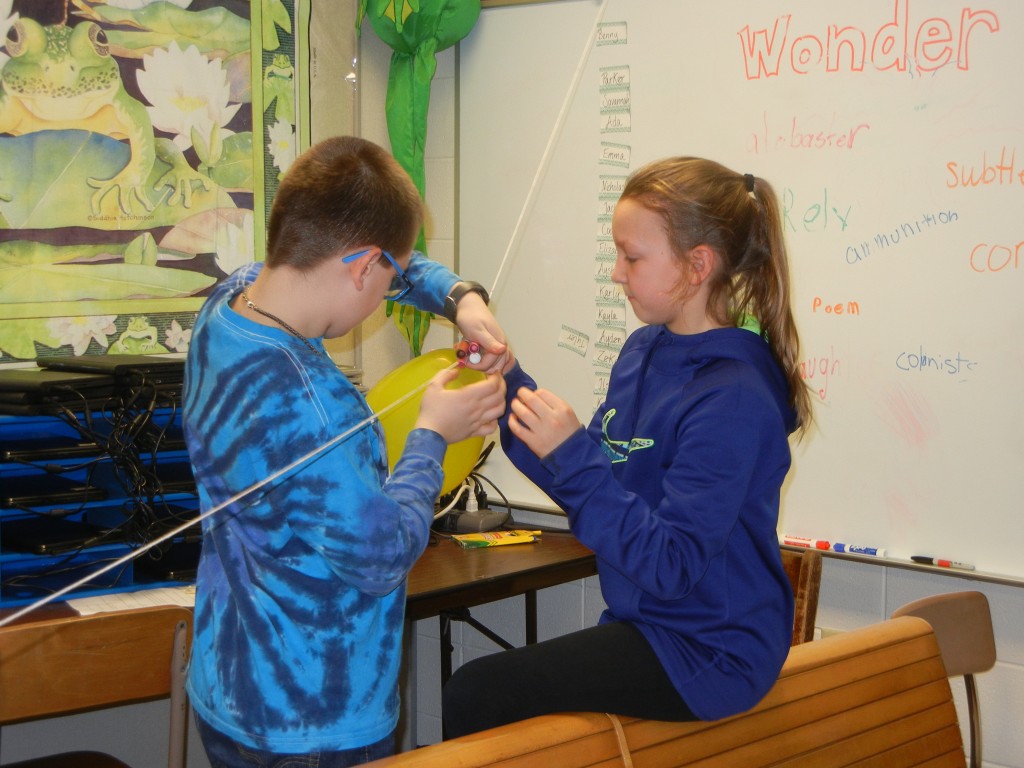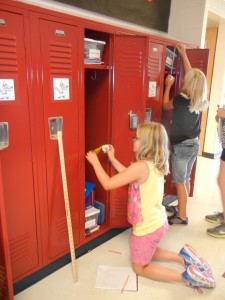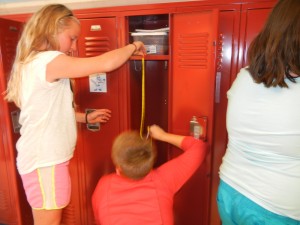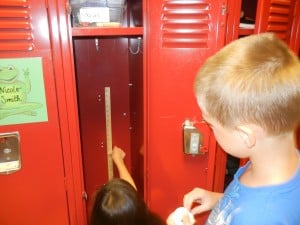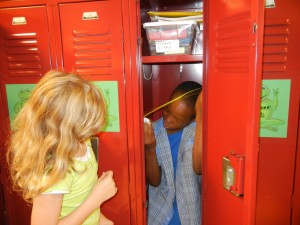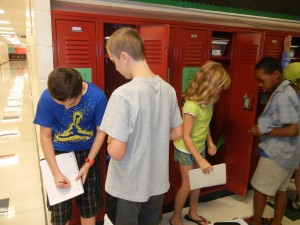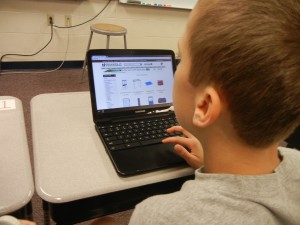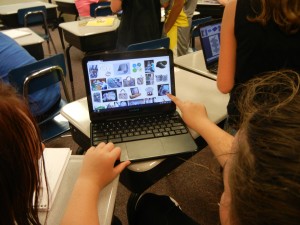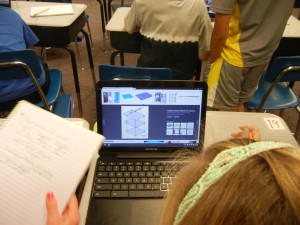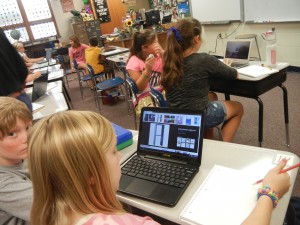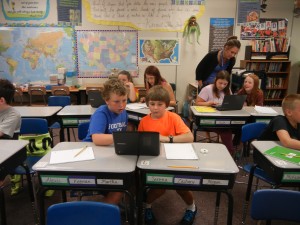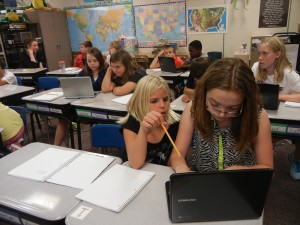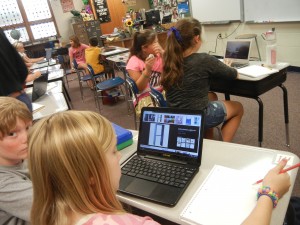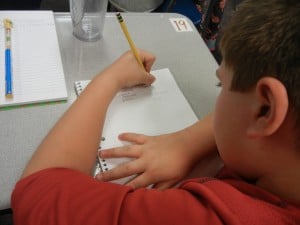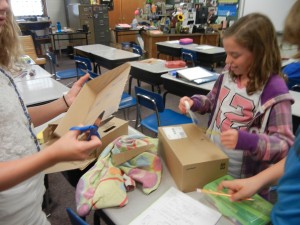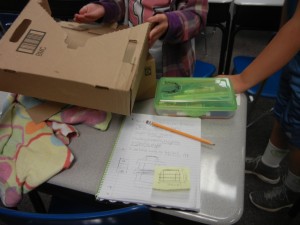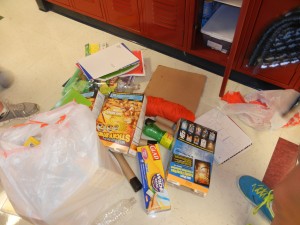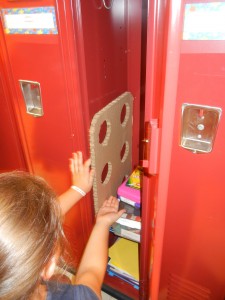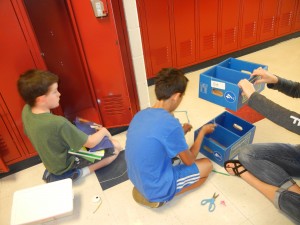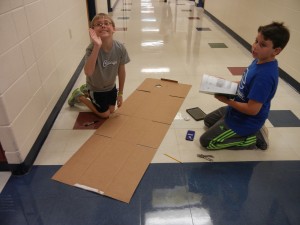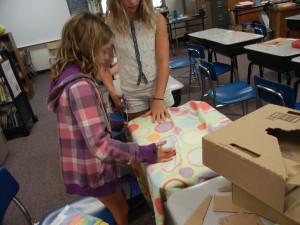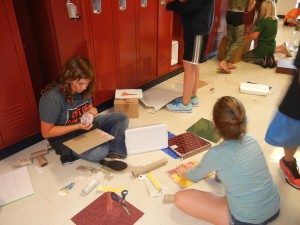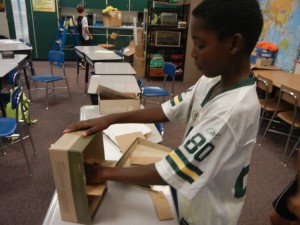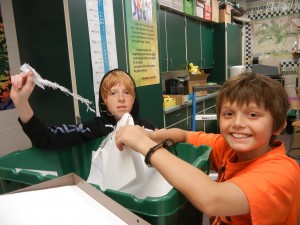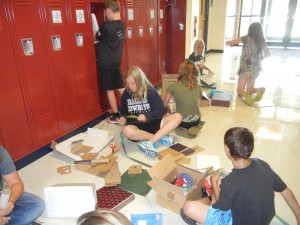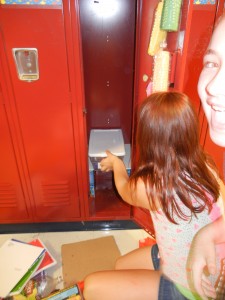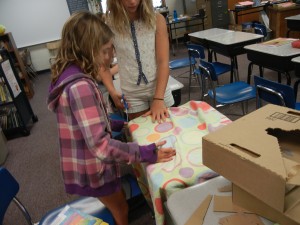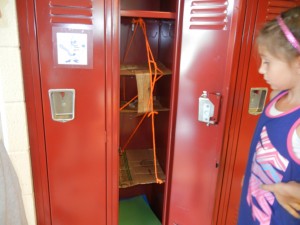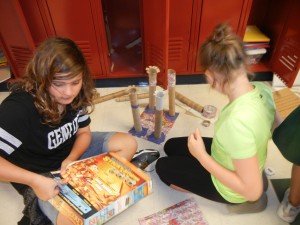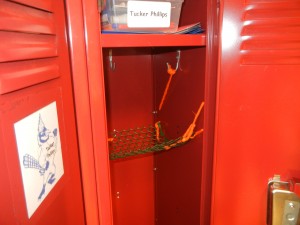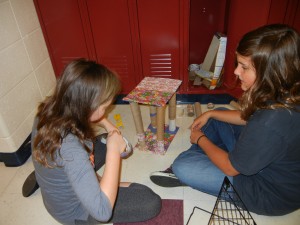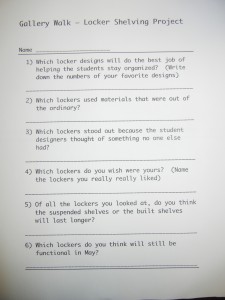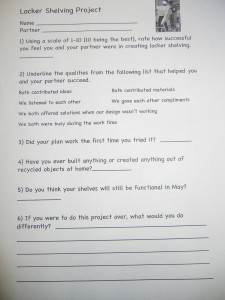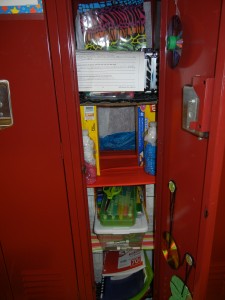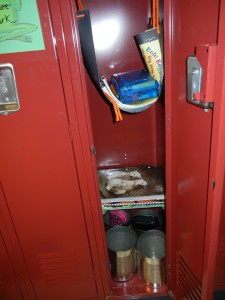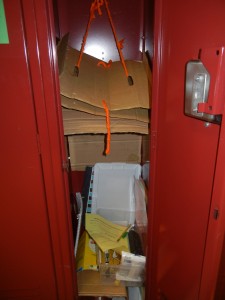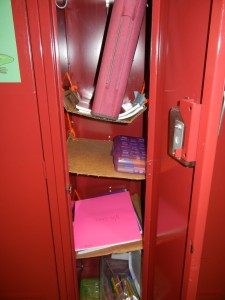“Your mission, ladies and gentlemen, is to make a balloon travel along a string. Once you are satisfied that you have successfully accomplished that, you are to adjust your design to make the balloon travel faster. In the end I would like you to see just how fast you can get the balloon to travel to its destination at the end of the string.”
Those were the instructions. The materials each team of two started with were a balloon, a straw, and whatever length of string they wanted. If they wanted to use additional materials, they had to ask. I said yes to all requests that did not present safety concerns. And they were off!
This was such a fascinating process to watch. Most immediately began blowing up the balloons and tying them off – but then what? Why were they given a straw? “Do we have to use the straw? How long should the string be?”
“Yes, use the straw. Cut the string where you think it should be cut.”
There was that slight hesitation. Those moments of letting the idea sink in that I wasn’t going to give them step by step directions. But quickly that hesitation turned to excitement and concentration on the task. I stepped back at this point and became the observer and recorder of the event. I did not blow up balloons, and I did not get drawn into any group’s brainstorm. I was eager to watch how each group would work this out.
At least two groups tried to use what they knew about balloons. They rubbed the balloon in their hair to create static electricity. They were disappointed to see that it wasn’t enough to keep the balloon sticking to the straw.
They tried seeing if the static electricity they were creating could be strong enough to pull the balloon along the string. At this point the balloon was taped to a straw through which the string was threaded. Then the balloon was rubbed in hair. The girl followed the balloon as it was released on the string, hoping her charged hair would pull the balloon. This worked, but it was not speedy. They abandoned the idea of using static electricity in this process, although other groups were curious by what this group was doing, and I saw them trying things with it as well.
Most everyone knew that by having one end of the string higher than the other, gravity would help that balloon move along the string. There was one group, however, that created a two person game. They rigged the strings in such a way that each person held the end of two strings. As the first person pulled one string back, the balloon moved toward the other person. Then the second person pulled one string back, and the balloon traveled back to the first person! They added to the fun of their new game by drawing a face on their balloon. What an unexpected invention!
Those who were taping one end of their string to the wall quickly learned that masking tape sticks better than scotch tape! I did not let anyone attach their string to the ceiling, so they reached up along the wall as high as they could reach. It was interesting to see the groups experiment with the angle of descent. They learned that it indeed made a difference!
While some were learning that the angle of descent was important, others were learning that the tautness of the string was important. A few trials in which the balloon slowed and stopped along the way down, made the members of those groups tighten up the string. One group even rubbed the string with closed markers, hoping to make the straw move more smoothly.
The next interesting thing I saw happening was weights being added. This came in different ways. Some added the weight by taping it directly to the balloon. Others taped it to the straw. Sometimes the weights were added in random places on the balloon and sometimes the weights were equal on either side of the balloon. There was so much experimentation going on! And as I had hoped, trying out each great idea always seemed to inspire another!
It was interesting to note that some models had the balloon traveling above the string and some had it hanging below the string. It appeared that the faster model had the balloon above the string and the weights attached to the straw. One group used the cardboard tube from gift wrap and taped baggies full of Jenga blocks to it. That balloon went really fast, but the baggies which were taped to the tube with duct tape kept falling off upon impact.
Another innovative idea was to tie two strings side by side. The straw was cut in half and the strings were threaded through each piece. The balloon was then taped to the two straws and set on its descent. I loved that they thought of it and tried it. In the end they learned that using two strings slowed the balloon down rather than to speed it up.
Now if you are like me, you’ve been wondering when someone would think to blow up a balloon but NOT tie it off. Instead, hold it shut while it gets taped to the straw. Then let go and watch the balloon power itself! Funny, but only five out of the thirty groups that experimented throughout the day played around with this idea. One of the groups that used the untied balloon as an “engine” combined it with other great ideas. They had a tied off balloon taped to the bottom of the straw with weights (markers and glue sticks) taped to the straw. They blew up a second balloon and taped it to the top of the straw just before launching. After a few successful descents, they dressed up their model with airplane-type wings and called it the U.S.S. Static Electricity!
I think I enjoyed this 45 minute activity as much as the students. They were never done trying out different ideas. There was that one group that in the first five minutes said, “We can’t get it to go. We can’t do this.” But given five more minutes, they were busy, busy, busy.
After clean up, I gathered everyone together and asked what they had learned. You see, the point of this was never to have the fastest balloon in the class. The point was to keep modifying or trying different ideas and to improve the original design several times. To that end, everyone achieved success!

